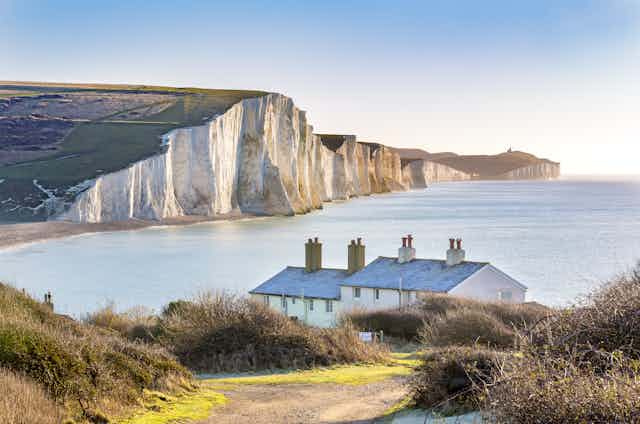Lonely Planet recently named England as number two in its top ten countries to visit in 2020, behind Bhutan. The travel website left no doubt that it is the English coastline that is the star attraction, thanks in no small part to the development of the England Coastal Path, which is due for completion in 2020 and will be around 2,975 miles long – the longest trail of its type in the world.
Good news, then, for English tourism marketing. Lonely Planet’s reach includes more than 12.5m social media followers and 13m site visits per month, in addition to all the extra media coverage that it’s top ten will have garnered. The large digital footprint will no doubt help in attracting international visitors – according to VisitBritain, a third of international tourists to Britain use search engine results when researching where to go on holiday.
This increased level of free marketing will hopefully bolster the tourism industry in many coastal towns – especially smaller, less well-known places which will benefit from being part of the path. This is important as many of these communities have suffered from the slow decline of seaside tourism in the UK.
While English coastal communities will be celebrating all of this, it’s easy to forget that both Wales and Scotland actually have higher levels of coastal visitation. Around a third of all visitors to both these countries make a trip to the coast. Similarly, Northern Ireland’s most popular visitor attraction is the Giant’s Causeway – and the Causeway coastal route is the third most popular destination after Belfast.

In comparison, a lot fewer international tourists specifically visit England’s coastal destinations. Only the south-west region of England – which includes Cornwall and the Jurassic Coast – has anything close to the numbers of Scotland and Wales with 26% of its visitors heading to the coast.
Given the popularity of the coastline in these countries, as well as the fact that the England Coastal Path is actually in two parts connected by the Wales Coast Path, what does this mean for the other countries in the UK?
London dominant
Based on the most recent figures, tourism to the UK is already heavily dominated by England. According to VisitBritain data from 2018, there were 15.1m international visitors taking holidays in the UK, of which only 13% visited Scotland, 2.7% visited Wales and less than 1% visited Northern Ireland.

These numbers are noticeably smaller than England’s slice of the holiday pie, which is substantial at 86% of all international visitors. Incidentally less than a third of these people explore outside London. One way of looking at these numbers would be to conclude that tourism needs to be distributed better across the UK – particularly Scotland, Wales and Northern Ireland. But there are bigger issues at play here.
There is already concern about over-tourism, especially in relation to Edinburgh and the Isle of Skye in the Scottish Highlands. But, as The Scotsman reports, Scotland’s issues are less about too many people and more about too many people in too few places in very specific time periods.
In order to enable a more even distribution of visitors, the UK’s smaller countries need to not only properly market alternative attractions but also provide access to these new tourist points, preferably with affordable and reliable forms of public transport.
Getting there
This leads to another major issue which is often glossed over when talking about UK public transport. At present, the focus in transport planning is concentrated on increasing capacity at the UK’s already busy airports – you can see this in all the discussion around a third runway at Heathrow.
Meanwhile much of the UK – particularly smaller places, including many found in areas of great natural beauty – lacks easily accessible local public transport. What does exist is often inefficient or has little to no connectivity to tourist hubs. While the government is aware of this issue and has published best practice guidelines, problems continue due to a complex privatised public transport system.

But while these are both important domestic issues, perhaps the largest problem faced by the UK’s tourism industry at the moment is the continued uncertainty over Brexit. VisitBritain’s forecast of inbound tourist numbers flagged a “high level of uncertainty” both among prospective visitors concerned about travel arrangements and in the industry itself, thanks to the continued lack of clarity around Brexit.
This uncertainty has been growing over the past two years, causing a fall in visitor numbers in 2018 and creating a Brexit slump. According to the Office for National Statistics, there were 3% fewer overseas visitors in 2018 than the previous year – a fall of 1.2m travellers, who spent less money to the tune of £1.6 billion.
VisitBritain is projecting that 2019 will show a small recovery in the number of overseas holiday makers, but it’s taking a business-as-usual approach to its modelling, which is unlikely to have accounted for the continuing uncertainty caused by Brexit, the turbulent political landscape and – now – the prospect of a general election. These numbers also don’t reflect the instability of the tourism industry following the collapse of Thomas Cook, which has also been partly blamed on Brexit.
In the end Lonely Planet’s recommendation may well – in a more stable environment – motivate larger investment in tourism infrastructure, but my gut feeling is that it would be largely focused on England, to the detriment of the other countries in the union.
However, given the political quagmire in which the UK finds itself, Lonely Planet’s enthusiasm is likely to do little to assuage visitors’ anxieties around organising travel to the UK. The tourism industry in Scotland, Wales and Northern Ireland has significantly more to worry about from the – as yet – unsolved Brexit issue than England’s second place spot on Lonely Planet’s list.

